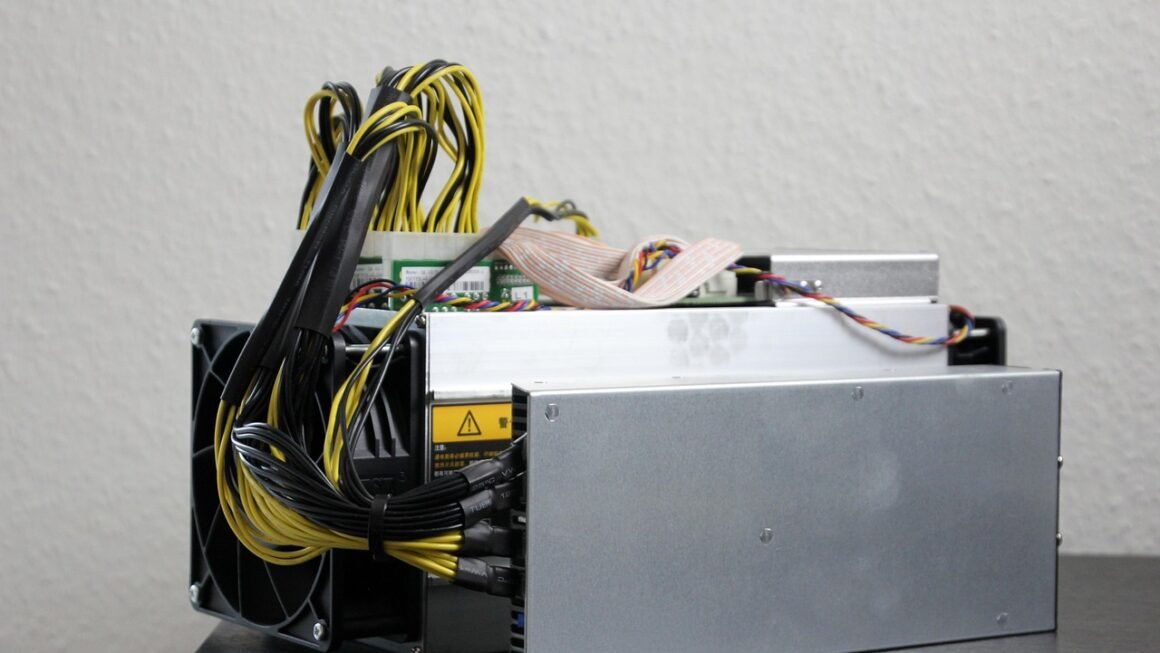Smart contracts are the backbone of decentralized applications (dApps) and decentralized finance (DeFi). They automate processes, enhance transparency, and eliminate intermediaries. However, vulnerabilities in these contracts can lead to significant financial losses and reputational damage. A smart contract audit is a vital safeguard, ensuring the code is secure, functional, and performs as intended. This comprehensive guide will delve into the intricacies of smart contract audits, covering everything from their importance to the audit process and best practices.
What is a Smart Contract Audit?
A smart contract audit is a comprehensive review of a smart contract’s code to identify potential vulnerabilities, bugs, and security risks. Think of it like a security checkup for your code, conducted by specialized auditors who understand the intricacies of blockchain technology and smart contract development. The goal is to ensure the contract functions correctly, is free from exploitable flaws, and adheres to best practices.
Why are Smart Contract Audits Necessary?
Smart contracts manage valuable assets, often digital currencies or tokens. Once deployed on the blockchain, they are generally immutable, meaning that vulnerabilities cannot be easily fixed. This immutability makes smart contract audits crucial before deployment. Here’s why:
- Prevent Financial Losses: Exploits can lead to significant financial losses for users and project developers. Audits help identify and mitigate these risks.
Example: The DAO hack in 2016, caused by a vulnerability in the smart contract, resulted in the loss of approximately $60 million worth of Ether.
- Enhance Security: Audits uncover security flaws that could be exploited by malicious actors.
Example: Integer overflows, reentrancy attacks, and logic errors are common vulnerabilities that auditors can detect.
- Improve Code Quality: Audits provide feedback on code structure, gas efficiency, and overall maintainability, leading to better-quality code.
- Build Trust and Credibility: A publicly available audit report from a reputable firm increases user confidence and trust in the project. This is vital for attracting investors and users.
- Compliance: Some regulatory frameworks require smart contract audits to ensure compliance with industry standards and legal requirements.
Example: Increasingly, DeFi projects are facing scrutiny from regulatory bodies like the SEC, making audits a necessary step.
The Importance of Audit Timing
The best time to conduct a smart contract audit is before deploying the contract to the mainnet (the live blockchain network). While audits can be performed after deployment, fixing vulnerabilities at that stage is significantly more complex and costly, potentially requiring contract migration or other disruptive measures. Ideally, you should conduct audits at various stages of development:
- Early Stage Review: A high-level review of the architecture and design to identify potential flaws early on.
- Mid-Stage Audit: A more detailed audit of the code after the core functionality is implemented.
- Pre-Deployment Audit: A final, comprehensive audit just before deploying the contract to the mainnet. This is the most crucial audit.
The Smart Contract Audit Process
The audit process typically involves several stages, each focusing on different aspects of the smart contract. A structured approach ensures thorough coverage and efficient detection of vulnerabilities.
Planning and Preparation
- Define Scope: Clearly define the scope of the audit, including the specific contracts to be audited, the features to be reviewed, and the objectives of the audit.
- Provide Documentation: Provide the audit team with comprehensive documentation, including:
Technical specifications outlining the contract’s functionality
Code documentation explaining the contract’s logic and purpose
Test cases demonstrating how the contract is intended to be used
Any relevant architecture diagrams or design documents
- Set Expectations: Clearly communicate expectations regarding the audit timeline, deliverables, and reporting format.
Code Review
This is the core of the audit process, where auditors meticulously examine the smart contract code line by line. They look for potential vulnerabilities, bugs, and inefficiencies.
- Manual Inspection: Auditors manually review the code, looking for common vulnerabilities and logic errors. This involves understanding the contract’s intended functionality and identifying potential deviations.
Example: Checking for reentrancy vulnerabilities in contracts that handle Ether transfers.
- Automated Analysis: Auditors use automated tools to identify potential vulnerabilities, such as:
Static Analysis: Tools like Slither and Mythril analyze the code for potential vulnerabilities without executing it.
Symbolic Execution: Tools like MythX explore all possible execution paths of the contract to identify potential vulnerabilities.
Fuzzing: Tools like Echidna generate random inputs to test the contract’s behavior and identify unexpected behavior or crashes.
- Gas Optimization: Auditors identify areas where the contract’s gas consumption can be reduced to lower transaction costs.
Example: Using more efficient data structures or algorithms to reduce gas usage.
- Code Style and Best Practices: Auditors review the code for adherence to coding standards and best practices, such as naming conventions and code organization.
Testing
Testing involves executing the smart contract in a controlled environment to verify its functionality and identify potential bugs.
- Unit Testing: Testing individual functions or modules of the contract to ensure they behave as expected.
Example: Testing the functionality of a token transfer function to ensure it correctly updates balances.
- Integration Testing: Testing how different components of the contract interact with each other.
Example: Testing how a staking contract interacts with a token contract.
- Security Testing: Testing the contract for specific vulnerabilities, such as reentrancy attacks, integer overflows, and denial-of-service attacks.
Example: Attempting to exploit a reentrancy vulnerability by calling a function recursively.
Reporting and Remediation
After completing the audit, the audit team prepares a report outlining the findings, including:
- Vulnerability Descriptions: Detailed descriptions of each vulnerability identified, including its severity and potential impact.
- Recommendations: Specific recommendations for fixing each vulnerability.
- Severity Levels: Categorizing vulnerabilities based on their severity (e.g., critical, high, medium, low).
- Code Examples: Providing code examples that demonstrate the vulnerability and how it can be exploited.
The development team then addresses the vulnerabilities identified in the report and makes the necessary code changes.
Re-Audit and Final Report
After the development team has addressed the vulnerabilities, the audit team conducts a re-audit to verify that the fixes are effective and do not introduce new vulnerabilities. A final report is then issued, summarizing the audit process, findings, and remediation efforts. This report is often made public to demonstrate the project’s commitment to security.
Selecting a Smart Contract Audit Firm
Choosing the right audit firm is crucial for ensuring a thorough and reliable audit. Consider the following factors:
Experience and Expertise
- Blockchain Experience: The audit firm should have extensive experience auditing smart contracts and a deep understanding of blockchain technology.
- Security Expertise: The auditors should have strong security expertise and be familiar with common smart contract vulnerabilities.
- Technical Skills: The auditors should have proficiency in the programming languages used in the smart contract (e.g., Solidity, Vyper).
Reputation and Credentials
- Track Record: Look for audit firms with a proven track record of identifying vulnerabilities and providing valuable insights.
- Client Testimonials: Check client testimonials and reviews to get a sense of the firm’s quality of work.
- Industry Recognition: Look for audit firms that are recognized and respected in the blockchain industry.
Methodology and Tools
- Audit Methodology: The audit firm should have a well-defined audit methodology that covers all aspects of the smart contract.
- Automated Tools: The audit firm should use a combination of manual inspection and automated tools to identify vulnerabilities.
- Reporting Format: The audit firm should provide a clear and comprehensive audit report that is easy to understand.
Communication and Transparency
- Communication Skills: The audit team should be able to communicate effectively with the development team and explain technical issues in a clear and concise manner.
- Transparency: The audit firm should be transparent about its audit process and findings.
- Responsiveness: The audit firm should be responsive to questions and concerns from the development team.
Best Practices for Smart Contract Development and Audit Preparation
Following best practices in smart contract development can significantly reduce the risk of vulnerabilities and make the audit process more efficient.
Secure Coding Practices
- Use SafeMath Libraries: Use SafeMath libraries to prevent integer overflows and underflows.
Example: OpenZeppelin’s SafeMath library is a widely used and trusted library for this purpose.
- Implement Access Control: Implement strict access control mechanisms to prevent unauthorized access to sensitive functions.
* Example: Use modifiers to restrict access to functions based on user roles or permissions.
- Handle Errors Properly: Implement robust error handling to prevent unexpected behavior and ensure the contract functions correctly.
- Follow Solidity Best Practices: Adhere to the Solidity coding standards and best practices to improve code readability and maintainability.
- Minimize Gas Usage: Optimize the contract’s code to minimize gas consumption and reduce transaction costs.
Thorough Testing
- Write Unit Tests: Write comprehensive unit tests to verify the functionality of each function in the contract.
- Write Integration Tests: Write integration tests to verify how different components of the contract interact with each other.
- Use Fuzzing Tools: Use fuzzing tools to generate random inputs and test the contract’s behavior under unexpected conditions.
- Conduct Security Testing: Conduct security testing to identify potential vulnerabilities, such as reentrancy attacks and integer overflows.
Documentation
- Document the Code: Provide clear and concise documentation for the code, explaining the contract’s functionality and purpose.
- Document the Architecture: Document the contract’s architecture and design, including diagrams and explanations of the different components.
- Document the Test Cases: Document the test cases used to verify the contract’s functionality.
Conclusion
Smart contract audits are an essential part of the smart contract development lifecycle. They provide a crucial layer of security, helping to prevent financial losses, enhance code quality, and build trust and credibility. By understanding the audit process, selecting a reputable audit firm, and following best practices for smart contract development, you can significantly reduce the risk of vulnerabilities and ensure the security and reliability of your smart contracts. Investing in a smart contract audit is not just a cost; it’s an investment in the long-term success and security of your project.



